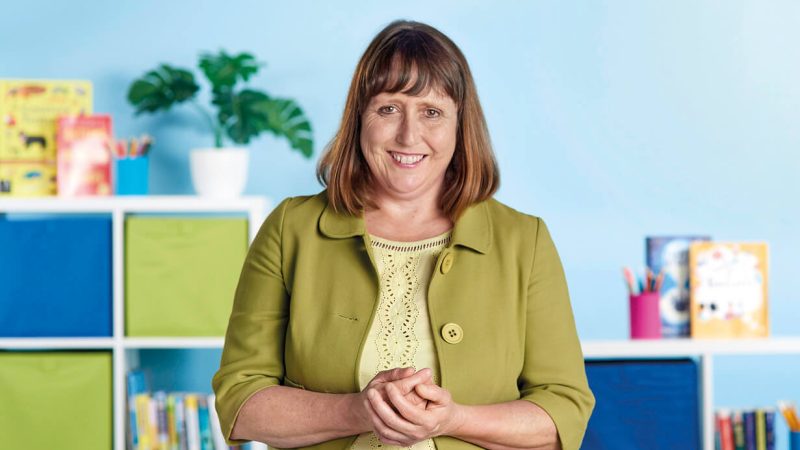Now You’re Talking – What Settings Can Do To Encourage Speech And Language Skills

Kathy Brodie suggests some easy and effective ways of supporting Early Years children as they develop their speech and language skills…

- by Kathy Brodie

The gift of speech and language is possibly the best present a child in Early Years can receive. With good speech and language, children are more able to express their emotions, interests and ideas.
They can develop socially as they interact with their peers, and emotionally as they learn to express their feelings, leaving them better able to flourish after making the transition to Reception.
Get the setting right
This doesn’t happen by accident, of course. It’s important for your setting to be a place that supports and encourages language development. You can do this in a variety of ways – having quiet and relatively secluded areas in your classrooms where children are able gather together to talk can encourage even the shyest boys and girls to use their voices.
But just as important as the physical environment is the emotional environment of your setting, and time must be spent getting this right. Don’t forget to encourage parents and carers to talk with their children at home too, and reinforce the idea that even a small amount of genuine, interested interaction can increase children’s listening and talking skills.
The following eight ideas should provide you with great starting points for encouraging talk in your setting:
1. Set aside places to talk Ensure that you have quiet areas that children can use to talk to each other. These might include large spaces, such as an outdoor shed where an adult can gather a larger group of children together; as well as smaller zoned-off areas where a few children can snuggle in and have private conversations. The latter could take the form of something as simple as a popup tent or a cushioned area shielded with a piece of voile.
2. Tell stories Narrating a story, rather than reading from a book, is a very useful technique. Encourage children to add to the story by using their names and discussing how characters might react in different situations. This will help them understand sequencing, consequences and making links – all vital skills for when they tell their own stories. This is also a good time to discuss how a story’s characters are feeling, and explore language associated with moods and emotions.
3. Make things interesting Provide speaking opportunities in many different areas, not just at circle time. The children could, for example, provide a running commentary on a football match being played outside, or describe a junk model they’ve assembled to their peers. Encouraging children to talk is easiest when they are talking about something that engages or fascinates them. This will vary from child to child, so it’s important to know and understand their interests.
4. Start playing Provide children with plenty of opportunities to take part in listening, turn-taking and cooperation games. These could be outdoors games, such as ‘What’s the Time Mr Wolf’, or memory games along the lines of ‘I went shopping and I bought…’
5. Use puppets Children will generally want to please you, the adult – but if some children find this a bit daunting, use a puppet, persona doll or toy to act as a focus so that the children feel they are talking to the puppet rather than you. This can reduce children’s worries about getting answers ‘right’ or ‘wrong’.
6. Provide challenge Adults can support speech and language by being good role models. Use complex sentence structures and more challenging language to help children broaden their experiences of speech and language. If children are not following your conversation you can simplify it, but more challenging language will help them to progress.
Similarly, using a wide semantic field when talking will help children to broaden their vocabulary – for example, by using the words ‘jacket’, ‘duffel coat’ or ‘anorak’, rather than just ‘coat’.
7. Encourage one-to-one exchanges Give all of the children opportunities to take part in individual conversations with practitioners, as well as group speaking opportunities. This means ensuring that children are able to talk when they are confident to do so, but see that you don’t pressurise a child into talking when their confidence is lacking. Part of this will involve making sure that every child is valued – not just the confident and competent children.
8. Involve parents Encourage parents to talk and conduct uninterrupted conversations in the home learning environment. These can take place anywhere, such as while walking home from nursery, waiting for a bus, cooking or getting ready for bed. Explain your ideas and reasoning clearly, so that they can be reinforced at home, and encourage parents to share their experiences.
Steps to success
Three points to keep in mind when encouraging talk…
1. Conversations involve a combination of speaking and listening. Children need to understand that they have to pay attention to the other person in order to receive information.
2. Using open-ended questions will encourage children to do more when demonstrating their grasp of language. If they struggle to form an answer, recast the question in a different way.
3. Allow children time to think and formulate their responses when answering questions. A period of up to 10 seconds could be helpful – though this is much longer than it sounds!
Kathy has previously worked in both nurseries and schools, most recently specialising in EYFS and SEN; fFor more information, visit kathybrodie.com or follow @kathybrodie










